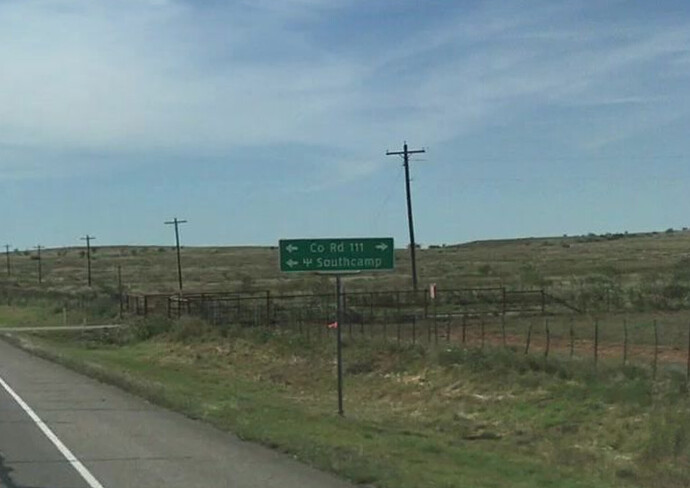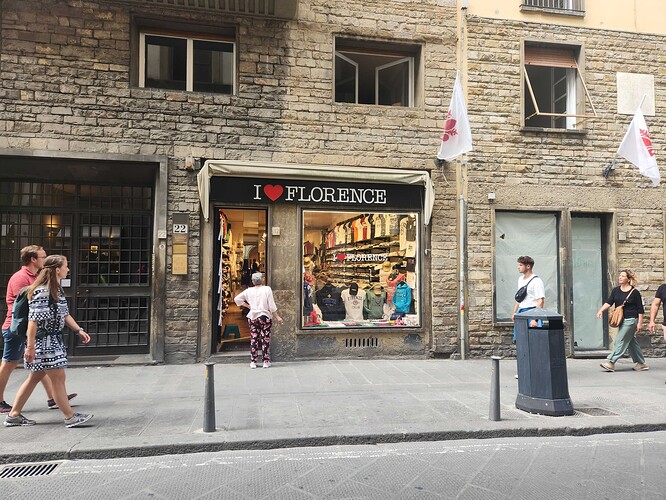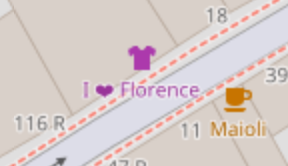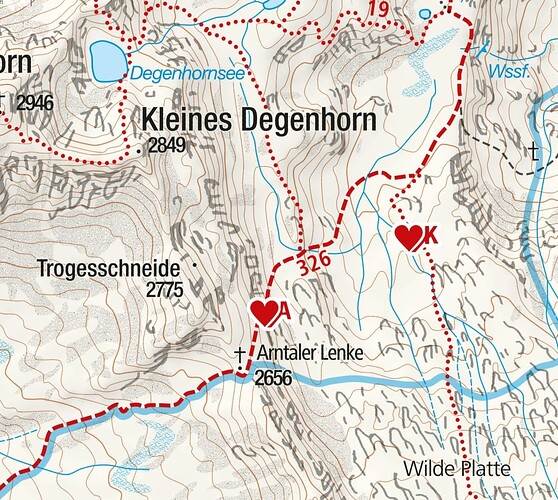Anyways, emoji are just a special case of a symbol. It’s only tempting to use them because the playful colors stand out amid dull plain text. But other kinds of rebuses have been in use for a long time, and it isn’t clear that we should prefer them over spelled-out text.
In North America, a university fraternity or sorority is typically known by a series of three Greek letters. Their logos – often signposted – consist of these letters, but their names are actually the names of the letters:
For example, a hypothetical fraternity named “Omega Sigma Mu” would have a logo resembling “ΩΣΜ”, but unless the fraternity’s mission is the promotion of Greek language studies, it would probably more often use “OSM” or “Omegas” as shorthand in English. Mappers sometimes tag the Greek letters as name because they’re shorter and thus more likely to render, but this would be a poor rationale for a naming choice.
In the western U.S., cattle ranches are often named after cattle brands. Some brands are so well-known that otherwise standard highway signs sometimes use them as abbreviations. For example, here’s “Pitchfork Southcamp” abbreviated with the ranch’s brand on a West Texas destination sign:
This usage has crept into the names of steakhouses, music venues, towns, and even presumably the international convenience store chain Circle K, which began in West Texas.
Even though this visual language is sometimes embedded in running prose, Unicode doesn’t specifically encode cattle brands or even have lookalikes for many of them. Most of these brands need to be spelled out anyways, because the proper full form can vary case by case.
There’s also the broader question of how far we should go in simulating a stylized name. This local television station is branded “ThinkTV”, and they go out of their way to use the superscript in all of their webpages and press releases.
In plain text, we could simulate the superscripts as “Thinkᵀⱽ”, but this is a misuse of phonetic symbols. “ThinkTV” would be more correct; if a renderer really cares that much about the organization’s brand guidelines, it can use the wikidata tag to find a logo to display.
![]() in the name. If there is a way to find a more official name without the emoji, I would use this. But if such a rigid organization as the Czech tourist club can use Unicode on their guideposts, I believe we can handle it in OSM.
in the name. If there is a way to find a more official name without the emoji, I would use this. But if such a rigid organization as the Czech tourist club can use Unicode on their guideposts, I believe we can handle it in OSM.



